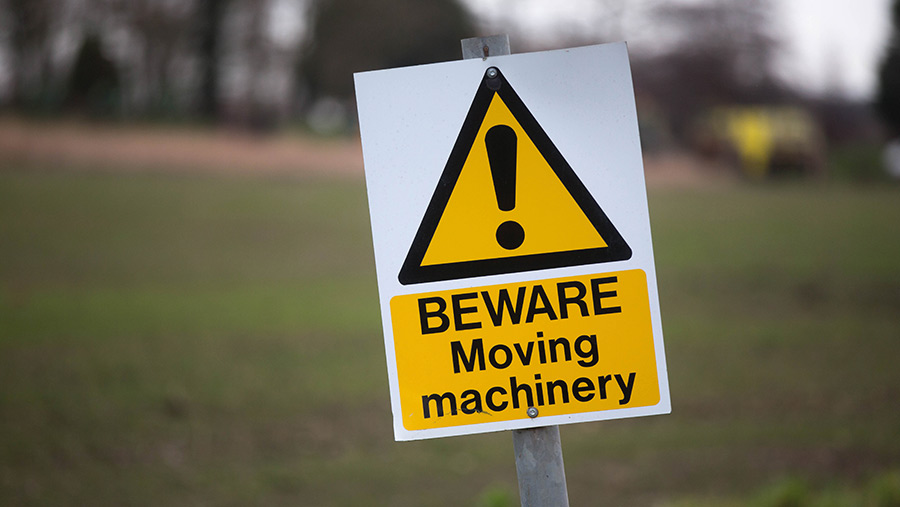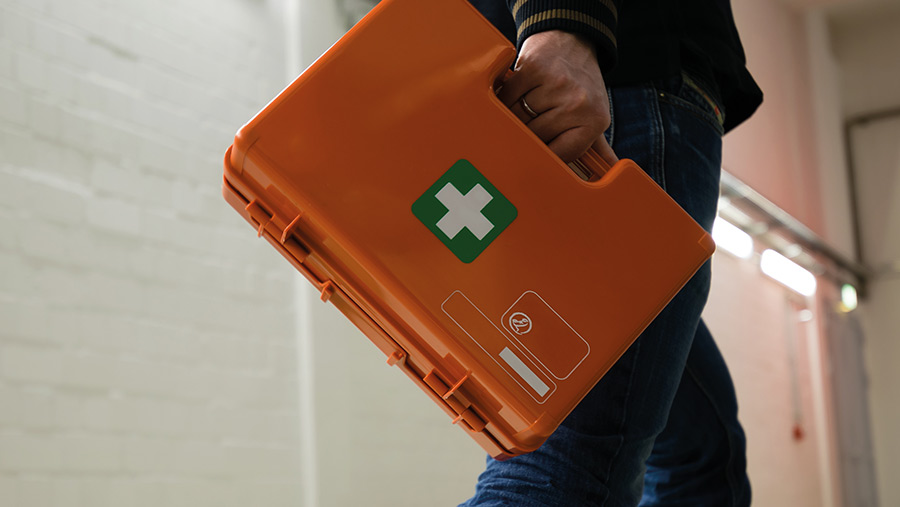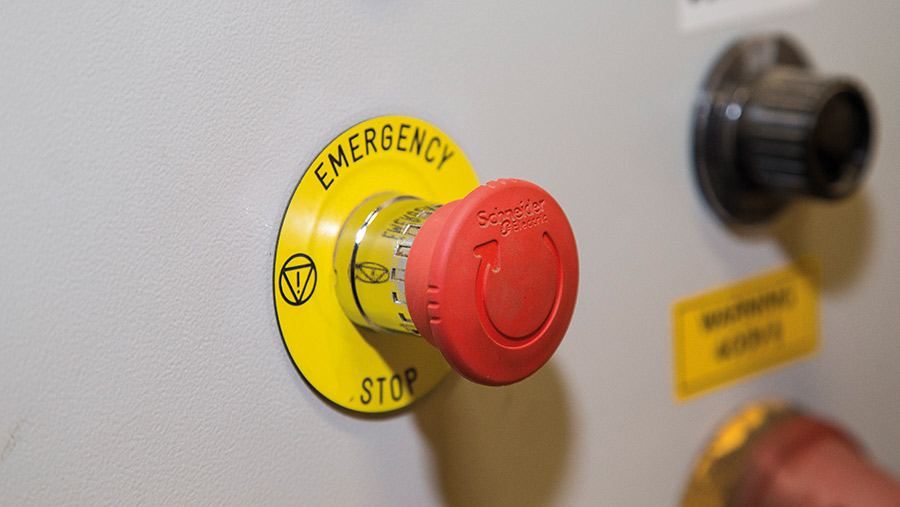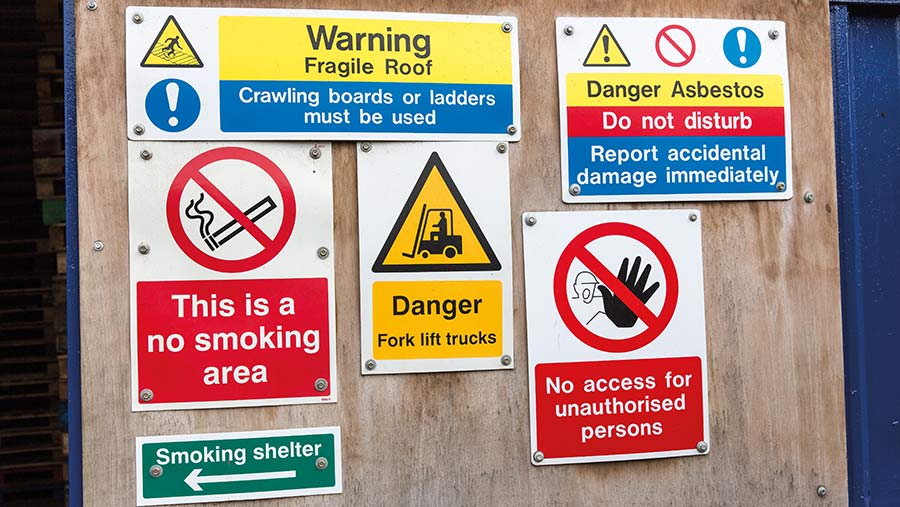Health and safety policy: What farmers need to include
 © Tim Scrivener
© Tim Scrivener There is no denying that farming can be a risky occupation. According to Health and Safety Executive figures, farmers and farmworkers are 20 times more likely to be killed at work than the national average for all industries.
While a written health and safety policy isn’t touted as a “fix-all” answer to improving that record, it is a key early step.
See more: Why farmers should prepare for and discuss health issues
Wayne Owen, an inspector with the Health and Safety Executive’s (HSE) agriculture division, says it is important that every farm properly manages their business so that health and safety risk is identified and properly managed.
“A suitable health and safety policy is the first step to achieving this,’’ says Mr Owen.
For farming businesses with five employees or more, a written policy is a legal requirement but, regardless of size, it is also now a condition for all farms certified by Red Tractor.
In simple terms, it should clearly state who does what, when and how but, contrary to farmer perception, it doesn’t need to be detailed, advises farm safety expert and training instructor Brian Rees, who is also a farmer.
“I have produced policies for businesses that are on one sheet of A4 paper – it really doesn’t have to be that detailed, as more detail can be included in the risk assessment,’’ he suggests.
He describes a policy as a signed statement of intent that a farm will do everything that is reasonably practical to set itself up in a way that complies with all health and safety regulations.
What it is not is a tool for abdicating responsibility, Mr Rees adds. “Farmers often think they are covering themselves with a health and safety policy, but that is not the case – it is only a statement of intent.’’
In his experience, farmers fall into three groups on the subject of health and safety policies.
“There is a third who understand it is their responsibility, a third who think having a policy has nothing to do with them because they are self-employed, and a third who believe that an incident will never happen to them therefore they don’t need to do anything about it.’’
This is one reason why Mr Rees prefers to see farmers producing their own policy instead of hiring a professional to do it for them.
“A farm might have an audit and policy done by a professional and it is given to them in a lovely file, but that might just then sit in the cupboard.
“Yes, it is very professionally done, but it is better for a farmer to have a go themselves, to think about the health and safety situation on their farm, to make them realise that health and safety starts with them as the employer.’’
Mr Rees recommends producing a document listing each health and safety requirement, who is responsible for it and how each of the requirements will be delivered.
While every farm will be different, he advises on some of the key areas to include.
Farmers’ responsibilities
From the directors of a business to each member of staff, health and safety rests with everyone on the farm.
However, the policy should include the name of the person with overall responsibility; this might be the farm owner or, in the case of a company structure, a director.
This section should also include the legal duties of staff under the Health and Safety at Work Act 1974, such as taking reasonable care for their own health and safety and that of others.
First aid
If the business has an appointed person for first aid, name them in the document, and include details of where first-aid supplies are located.

© Fokussiert/Adobe Stock
It is common for a policy to state that the most senior member of staff present is responsible for calling an ambulance when required.
Accident reporting
Set out how accidents are to be recorded and who has responsibility for undertaking investigations following accidents, dangerous occurrences and work-related ill-health absence.

© Nattawit/Adobe Stock
Staff training
All staff should be adequately trained to carry out their work, so include a commitment that training will be identified, arranged and monitored.
Set out which tasks will only be carried out by authorised and trained staff; this might be the handling and use of chemicals, the administration of veterinary medicines, handling livestock, and the use of chainsaws and vehicles such as tractors and telehandlers.
Safe machinery and work equipment
Farmers have a duty to ensure that all plant, machinery and equipment is maintained in a safe condition; therefore, detail in the policy how this will be done – for example, through regular servicing, maintenance or weekly checks.

© GNP
Free resources
There are useful free resources available that guide farmers in how to produce a health and safety policy.
Yellow Wellies recently published Build your Own Health & Safety Policy Digital Tool.
HSE also has health and safety policy pages, with Prepare a health and safety policy. This is useful as it sets out the basics that should be included in a policy.
Electrical safety
Many lives have been lost through equipment coming into contact with overhead power lines, so include a commitment to ensure that a safe system of work is adopted for any jobs taking place under or near cables.
But, in general, some tasks must not take place near to live overhead power lines.
Include policies on fixed installations, portable appliances and underground services, too – in the case of portable electrical equipment, for example, state that circuit breakers and RCD trip devices will be regularly checked and maintained.
Working at height
This is another aspect of farm work that accounts for many deaths year on year so include a section on this, such as making it clear that only trained and authorised staff are permitted to undertake work at height.
State that any equipment is suitable and sufficient and that it will be regularly checked, with formal inspection of ladders and stepladders carried out on a quarterly basis.
Welfare facilities
Workers should have access to adequate rest areas, toilet and wash facilities, so confirm these will be available and that there will be adequate supplies of potable water and a means of heating food or water for hot drinks.
Workplace transport
Incidents involving moving vehicles are the primary cause of deaths in UK agriculture – they were responsible for 30% of all fatalities in the past five years, with eight deaths in 2021-22, and many more people have been injured.
This is, therefore, an important section to incorporate. Assurances might include that training will be given to drivers and that all vehicles will be maintained and fitted with appropriate safety devices, such as warning lights and beepers.
Hazardous substances
Farmers have a duty to assess the risk from hazardous substances used on the farm, such as pesticides, disinfectants and fertiliser, and also those generated or present in work activities, as in dust or fumes.
In line with this, include a statement that the business will identify substances and carry out Control of Substances Hazardous to Health assessments and ensure that required control measures are implemented.
Affirm that the business will communicate information about any risks and provide training in the controls required, but with staff taking responsibility for following those controls.
Safety signage
Warning signs are part and parcel of creating a safe environment on a farm, more so in a diversified business as it will have many more visitors to consider.

© GNP
Include a statement reflecting that where the need for safety signage is identified – for example, through a risk assessment – it will be sourced and displayed in the relevant location and that the adequacy of the signage will be regularly reviewed.
Add a line that staff will be made aware that they must abide by the instructions given on safety signage and that they should help visitors to comply with the signs as necessary.
